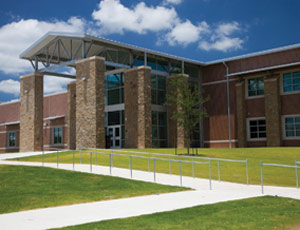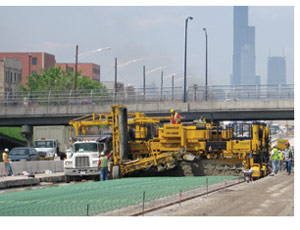With most of 2010 in the books, it looks as though experts who predicted a long, slow recovery from the nationwide recession have accurate crystal balls.


Unemployment is still high, home sales are still slow and money is still hard to borrow for all but those with the highest credit ratings.
But in talking with contractors and architects, there are faint glimmers of hope that 2011 will be another small step on the long, steep road to recovery that’s been predicted to last from five to 10 years.
McGraw-Hill Construction (which publishes Midwest Construction) recently released its estimates for 2011’s regional construction starts in the Midwest.
McGraw-Hill predicts that single-family housing starts will rise 23% in 2011, climbing from 16,225 units in 2010 to 19,900 units in 2011, and that multi-family housing starts will go up 7%, from 4,100 in 2010 to 4,400 in 2011.
Commercial and non-manufacturing building starts are predicted to rise from 9,525 to 11,175, or 17%.
Institutional and other nonresidential building starts will go from 19,600 to 19,875, or an increase of about 1%.
Starts for non-building construction, which includes projects such as roads, bridges, and dams, are expected to drop about 3%, from 30,850 in 2010 to 30,075 in 2011.
McGraw-Hill predicts that aggregated starts for all types of construction will rise from 80,300 in 2010 to 85,425 in 2011, a net increase of 6%.
The American Institute of Architects’ recently released Architecture Billings Index, which measures nationwide architectural activity, showed that September’s design activity had reached a reading of 50.4, up from 48.2 the month before.
It was the fourth consecutive month that the ABI had risen, and the first time since 2007 that it had broken a score of 50 – which indicates an increase in billings.
In addition, the University of Illinois’ Flash Index for October showed that the Illinois economy appears headed in the right direction. The October reading rose to 93.8, up from 93.5 in September. Although the index is still below 100 (the dividing line between a growing and declining economy), it is undoubtedly heading upward.
Economist J. Fred Giertz, who compiles the monthly index for the university’s Institute of Government and Public Affairs, says that the Flash Index’s recent performance is consistent with the national pattern of slow recovery.
Giertz says Illinois appears to be recovering, but that it is still a year or more away from reaching pre-recession unemployment rates.
To take the pulse of the industry in the Midwest, Midwest Construction recently took a quick survey of experts in the fields of architecture and construction, as well as the executive director of a construction-user association.
Most of the interviewees expressed cautious optimism about the coming year and said that they believe the industry is heading down the right path – albeit in small steps.
Walter D. Street III, architect with Johnson & Lee Ltd. Architects/Planners, and 2010 president of AIA Chicago, says that recent conditions may be the worst for architecture and construction since the Great Depression of the 1930s. But he feels that things are a little better now than at this time last year.
Street says that he’s seen more activity among healthcare clients and in the community development arena.
“People have projects to do, but they can’t get financing,” he says. He believes that seeing any improvement may take until the middle of the second quarter of next year.
“Chicago activity is still somewhat flat,” he says. “This recession is hanging on longer than previous ones and it’s unusual in that almost all segments are down at the same time.”
Street is also concerned that the length and severity of the current recession will hurt the architectural profession over the long-term by driving young and talented architects into other professions.
“There are architects who have now been unemployed for one and a half to two years,” he says. “Some have gone back to school for further architectural training, but some will leave the profession. That loss of talent will hurt us down the road.”
Grant Uhlir, principal in the Chicago office of Gensler, and immediate past president of AIA Chicago, says he holds cautious optimism for 2011.
“There are more opportunities to work, but business is still very competitive,” says Uhlir. He says he sees some capital being loosened up for design projects, as corporations begin investing in new headquarters, research facilities and industrial facilities, as well as improved energy efficiency for existing buildings.

Post a comment to this article
Report Abusive Comment